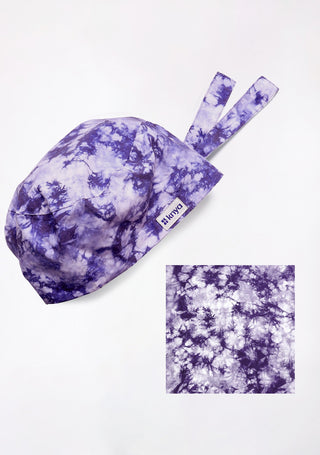In the fast-paced world of healthcare, where every moment counts, a healthcare professional’s attire plays a significant role. Among the essential accessories, the humble surgical cap is often a favorite. It’s not just functional but also a reflection of personality, comfort, and style. Whether your surgical cap sports vibrant prints or classic solid colors, keeping it clean and well-maintained is crucial. In this guide, we’ll explore practical tips to wash and care for your beloved surgical cap, ensuring it stays fresh, comfortable, and hygienic—shift after shift.
Why Regular Washing Matters
Surgical caps are a frontline defense in sterile environments, shielding against contaminants and maintaining hygiene standards. Over time, these caps collect sweat, oils, airborne particles, and possibly bodily fluids. Regular washing not only preserves the cap’s cleanliness but also extends its lifespan. By following a proper cleaning routine, you can prevent odors, maintain fabric integrity, and ensure compliance with healthcare protocols.
Check out Navy Blue Scrubs for Mens
Step-by-Step Guide to Washing Your Surgical Cap
1. Read the Care Label
Before tossing your surgical cap into the wash, check the care label. Different materials, embroidery, or special features might have specific cleaning instructions. These often include details on water temperature, detergent type, and whether the cap is machine-washable or requires handwashing.
2. Pre-Treat Stains
Stains are inevitable, but they don’t have to be permanent. Use a mild detergent or stain remover to pre-treat spots. Gently apply the solution to the affected area and let it sit for a few minutes. Avoid harsh chemicals and abrasive scrubbing, which can damage the fabric or embroidery.
3. Choose the Right Detergent
A gentle, hypoallergenic detergent works best for surgical caps. Products free from strong fragrances and harsh chemicals are ideal, especially for healthcare workers with sensitive skin. Look for detergents designed for delicate fabrics to maintain the cap’s quality.
4. Sort Your Laundry
To avoid color bleeding or fabric damage, wash surgical caps separately or with similar colors. This is especially important for vibrant or patterned caps. Sorting ensures your cap stays as bright and beautiful as the day you bought it.
5. Machine Washing Tips
If your cap is machine-washable:
- Turn it inside out to protect prints or embroidery.
- Place it in a mesh laundry bag to prevent tangling.
- Use a gentle cycle with cold water to minimize wear and tear. Avoid bleach and high-heat settings, which can damage the fabric.
6. Handwashing for Delicate Caps
For caps with delicate details, handwashing is the safest option:
- Fill a basin with cold water and add a small amount of mild detergent.
- Submerge the cap and gently agitate the water.
- Use your hands or a soft cloth to clean the fabric.
- Rinse thoroughly to remove all soap residue.
7. Rinse Thoroughly
Whether you machine wash or handwash, ensure all detergent is rinsed out. Residual soap can irritate the skin and degrade fabric over time. Rinse until the water runs clear, changing the water multiple times if necessary.
8. Dry with Care
High heat can shrink or damage delicate materials. Instead, air-dry your surgical cap:
- Lay it flat on a clean towel.
- Reshape it to its original form to avoid wrinkles or distortion.
- Let it dry naturally in a well-ventilated area, away from direct sunlight.
9. Proper Storage
Once your cap is clean and dry, store it properly:
- Keep it in a cool, dry place away from sunlight.
- Avoid folding or compressing it to maintain its shape.
- Use a dedicated space for your caps to keep them organized.
10. Inspect Regularly
Check your surgical caps for signs of wear, such as fading, loose stitching, or thinning fabric. Addressing minor issues early can extend their life and keep them looking professional.
Tips for Specialty Surgical Caps
If you own caps with unique prints, logos, or personalized embroidery, give them extra care. Follow manufacturer instructions or consult the brand, like Knya, for specific guidance to preserve these special features.
Rotating Your Surgical Caps
Having multiple caps in rotation can reduce washing frequency, preventing excessive wear and tear. It also allows each cap to air out thoroughly between uses, promoting hygiene.
Find the best white lab coat here
Knowing When to Retire Your Cap
Even the most durable caps have a lifespan. Signs like stretched elastic, faded prints, or thinning fabric indicate it might be time to retire your favorite cap. Repurpose old caps for non-clinical tasks, like cleaning or gardening, to extend their usefulness.
The Knya Promise
Knya surgical caps are designed with care, combining comfort, durability, and style. By following these washing and maintenance tips, you can ensure your Knya caps remain as reliable and vibrant as ever. Invest in proper care today to enjoy your favorite caps for many shifts to come.












